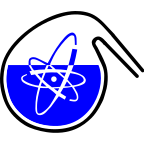Speaker
Description
Dressings for human wounds have been aimed at protection, removal of exudate, inhibition of exogenous microorganism invasion, and improved appearance. Protection was accomplished by covering the wound with dressing materials. Wound areas that are kept just damp may heal faster, but accumulation of exudates under the dressing can cause infection. Silver is important in the treatment of wounds due to its anti-microbial properties, and commonly used in the treatment of major burn injuries where bacterial infection is common. Also, activated carbons are the most widely used industrial adsorbent for removing contaminants from gaseous, aqueous, and non-aqueous streams. We fabricated activated carbon powder by using radiation technology. We purified lignin from black liquor and then electron beam irradiated to stabilize lignin for carbonization.
Finally, we fabricated and characterized the functional polyurethane (PU) foams containing silver nanoparticles and activated carbon composites. Various PU foams containing Ag and AC composites were prepared and their cytotoxicity, anti-microbial activity, and in vivo wound healing ability were evaluated. Ag and AC composite particles were homogeneously dispersed in PU foams. In particular, PU foam had sufficient anti-microbial activity against two pathogenic bacteria and had good biocompatibility. PU foams showed effective wound healing compared to controls. It will be a useful approach as a functional wound dressing material.

